Ever since Sir Arthur C. Clarke brought his proposal for geostationary satellite communications to the world in the 1945 edition of Wireless World magazine, their use has brought hope, prosperity, entertainment, and knowledge to humanity, all starting with the launch of Intelsat’s Early Bird, the first commercial geostationary communications satellite in 1965.
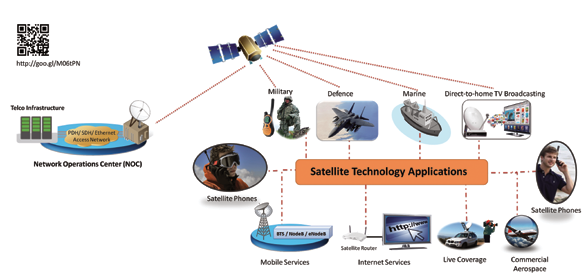
Figure 1. Satellite Technology Applications.
The future is equally optimistic for SATCOM. The scope of this article, however is more modest, as it takes a look at some of the current trends in satellite communications applications, testing, and test tools.
Referring to Figure 1 above, Satellite Technology Applications, the unique aspects of the satellite communications channel, especially of geosynchronous satellites, will be reviewed in this article.
Wide area connectivity almost anywhere and everywhere in the footprint of the satellite beam—thus applications such as video broadcast and mobile phone are possible for large populations
Almost instantaneous network deployment, with no wired infrastructure required—thus voice, data, and video applications can be available almost immediately
Propagation delay of about 250 milliseconds (up + down) and if you consider round trip, then almost 500 milliseconds
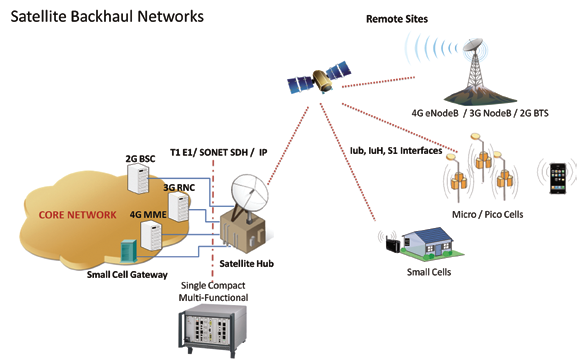
Figure 2: Satellite Backhaul for Mobile Networks
An RF channel that is more than 36,000 km long before amplification or repetition—this results in a free space path loss in the range of 190 to 208 dB (for frequencies in the 2 to 15 GHz range). In the past this was a show stopper. Now, however, high gain antennas, power amplifiers, ultra-low-noise receiver sensitivities and like technologies have ensured that such is no longer a problem.
Variable channel characteristics that can be totally absent or severely degraded as during sun outages, or bursty errors during rain and snow, or during clear sky low random/Gaussian errors if power/signal is constrained
Limited bandwidth since the available electromagnetic spectrum must be shared among all users—one area of world politics in which engineers and scientists have actually cooperated without acrimony
The above characteristics present challenges and opportunities. This article discusses some of these environments.
Mobile Networks Satellite Backhaul Issues, Test Tools + Requirements
Broadband mobile networks are the “in thing” these days, extremely competitive, and maximizing revenue is always a major, driving factor. These networks have dispersed radio access sites with their concomitant towers, antennas, and base stations that must connect to the core switching network efficiently.
Typically, when the distance between the base station equipment and the core of the network is short, the use of copper or fiber cables is viable, with the voice and data carried over widely available Time-Division Multiplexing (TDM) technology (T1, E1, T3, E3, and so on). Alternatively, the transmission can be carried over newer ATM, SDH (fiber optics) or IP networks. All of these techniques can use either copper, fiber, or radio links for physical layer connection.
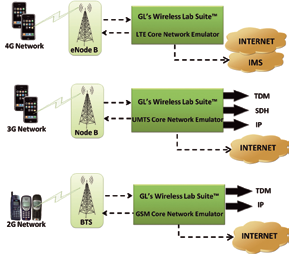
Figure 3: Mobile Core Network Simulator.
The use of radio links as the transport medium can be more efficient when the distance between the base station equipment and the core network is large, or when the terrain is mountainous. Satellite backhaul is most efficient for rural regions or remote areas where terrestrial links are scarce or expensive to deploy. Satellite backhaul can also replace traditional point-to-point links with point-to-multipoint solutions to accommodate high bandwidth requirements and traffic concentration of many base stations.
Testing such networks can also be a challenge. Unlike 2G networks that offer mainly voice connectivity, 3G and 4G networks provide better data services over Internet, such as access to email, video, fax, and MMS. The delivery of these mobile services has to overcome the challenges of delay, synchronization, coverage, bandwidth optimization, and cost effectiveness. To address the coverage and infrastructure cost, satellite technology is evolving towards integration with small cell technology.
Test Requirements: Satellite Backhaul For Mobile Networks
Simulation of the entire wireless core network infrastructure in a lab or field environments prior to deployment may be used with pre-defined network configurations, protocols, security settings, applications, and conformance tests. Pre-deployment testing can benefit functional, interoperability, and stress testing scenarios.
The overall objective of such a lab test suite is to provide a base network environment that enables service providers to test applications, devices, and services prior to deployment of real-time networks. Each lab test suite emulates all the core network elements and traffic types within the 2G, 3G, and 4G Wireless infrastructure. Desirable features of such lab test suites would be; interoperability, scalability, field upgrade, and future-ready framework to address the rapidly changing technology.
If possible, satellite mobile backhaul testing should support:
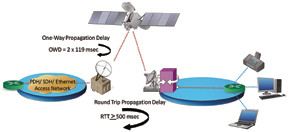
Figure 4. Satellite Delay.
• End-to-End voice and data quality testing
• Simulation of interfaces between Base Station to Core Network over T1 E1, SONET/SDH, and All-IP medium
• Sub-channel testing over T1 E1
• Signaling, voice, data, and fax transport capability
• Point to multi-point configurations
A typical complete lab suite provided by one test equipment manufacturer is shown in Figure 3 above.
Satellite Delay Measurement Over Voice, T1 E1, Datacom, T3 E3, + Optical Interfaces
As mentioned earlier, geosynchronous satellites are about 35,780 km above the surface of the Earth. An RF signal (at the speed of light = 300,000 km/sec) takes 35,780/300,000 = 0.119 sec or 119 milliseconds to reach the satellite. Ignoring delays within the satellite, the signal is generally repeated, amplified, and retransmitted back to Earth for another 119 milliseconds, thus the sum of the up + down delay is approximately 239 milliseconds. This delay is greater than the distances involved in terrestrial systems. The round trip propagation delay of almost 500 milliseconds can cause issues for both voice and data transmission if not considered in the initial system design. (See Figure 4 at the top of the next column.)
For example, if satellite circuits are used for voice, the quarter second delay may cause double talk, unless the parties know beforehand that they are speaking over a satellite circuit. If ‘A’ utters a few words and expects a response from ‘B’ within 100 milliseconds (normal conversational delay), but does not get one, then ‘A’ may repeat, only to hear ‘B’s’ response during the repetition. This causes both parties to stutter and restart the conversation. Further, as is common, the parties will be talking on 2-wire telephones, then tail echo cancellation is essential, otherwise the half second echo makes normal conversation impossible. This is shown below in Figure 5. If the near-end cancelers fail to cancel the near-end echo, then the echo will traverse the satellite path—an annoying half-second echo will be heard by the talker.
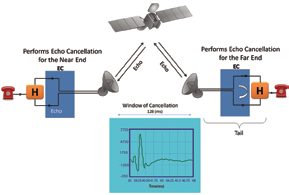
Figure 5. Echo Cancellation In Satellite Network.
Typical characteristics expected of an echo canceler (EC) in TDM networks include...
• Provides voice echo cancellation of up to 128ms echo tails
• Meets ITU-T G.164, G.165, G.168 (2000 / 2002) requirements for echo cancellation
• Fax / Modem G.164 and G.165 (2100 Hz) tone disable detection
• Supports various Signaling Protocols (SS7, ISDN, GSM, Frame Relay ...)
• Non-Linear Processor with Comfort Noise Insertion
• Double-Talk Detection
• Narrow-Band Signal Detection
• Eliminates long echo tail
Test equipments that can test the echo cancelers or simulate the echo cancellation across the network are necessary tools to ensure error-free voice communications. GL provides many tools to test and measure echo canceler performance. Further information on these tools is available at http://www.gl.com/echocan.html.
In the case of data transmission over satellite, protocols used to ensure error free and high throughput data flow requires modification so that delays in acknowledgement do not throttle the transmitter—i.e., the transmitter should not have to wait for acknowledgement of past frames to send future frames. Usually this is accomplished by permitting the transmitter to send many frames unacknowledged, but not so many that poor error rates would degrade throughput substantially. For example, when ISDN protocol is used, the underlying repeat request protocol is called LAPD. The frame numbering scheme is extended to permit the smooth flow of frames.
Test equipment that can emulate such protocols, simulate delay, and error rates is valuable to measure real-life performance of data applications. GL’s Signaling and Traffic Emulation tools are widely used in the industry for such simulations http://www.gl.com/signaling-and-traffic-simulator.html.
Measurement Of The Satellite Delay
Measurement of the satellite delay and tail delays is also useful in system design and proper configuration of networks. For example, when digital bit streams are present and error free transmission is possible, at least for
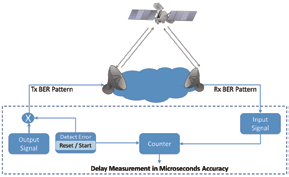
Figure 6. Delay Measurement In Microseconds Accuracy.
5 seconds, then the technique below can be used to measure precise OWD (one way delay) and RTD (round trip delay). In addition to these, measuring latency introduced by the device itself is also important to consider (please see Figure 6 below`).
Satellite Delay Measurement On Ethernet Platforms
IP-based satellite mobile backhaul networks are characterized by the service level agreement (SLA) performance criteria that helps users measure the overall Quality of Service. SLA performance factors such as packet delay, packet delay variation (jitter), and packet loss are important to support services such as voice and data. These parameters are defined as follows:
• Throughput—the data transfer rate achievable by the Ethernet/IP network
• Delay (Latency)—the delay introduced by the Ethernet/IP network in transferring packets
• Packet Loss—the number of frames lost in transit
• Out of Sequence Packets—measures the amount of frames that are delivered out of sequence.
• Burst ability—the ability of the network to handle full rate traffic
Tests such as BERT, RFC 2544, and Y.1564 SLA tests are very useful methods to determine Ethernet/IP QoS metrics and can be used to test the Service Level Agreements (SLA) by service providers.
Bit Error Rate Test clarifies how many bits were received and how many error bits were received during this time of transmission, i.e., ratio of erroneously received bits to all received bits. Acceptable error rates start from 1 error in 10 million bits or 1 x E-7. To measure this kind of error rate accurately, the tests have to run over time to build up a statistical picture of the errors. BERT on Ethernet / IP Test tools should support testing at various levels:
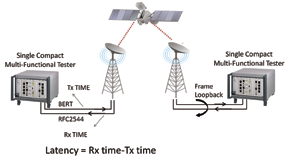
Figure 7. Delay Measurement In IP Over Satellite Networks.
• Layer 1 (Physical layer)—Payload is made up of BERT patterns
• Layer 2 (Framed Ethernet layer)—Bit pattern is inserted as the Ethernet Payload
• Layer 2 with Stacked VLA—Bit pattern is inserted as Ethernet Payload with VLAN tags
• Layer 2.5 (MPLS)—Bit pattern is inserted as MPLS Headers
• Layer 3 (IP level)—Bit pattern is inserted as the IP packet payload
• Layer 4 (UDP level)—Bit pattern is inserted as the UDP packet payload
The Latency (or the delay) tests, which are significantly important in Ethernet is measured as the time taken for the frame, from the time it leaves one end to arrive at the other end. This is very useful measurement, because of the many delay-sensitive applications like VoIP, Video, Financial services etc.
An Ethernet/IP tester used in satellite communications must support BERT, RFC 2544, and Y.1564 SLA tests at minimum. GL’s Ethernet Tester are precisely designed to handle these testing requirements, with information at http://www.gl.com/telecom-test-solutions/testing-ethernet-ip-wan-networks.html.
Satellite Delay Compensation Application
In maritime applications, many remote radio sites transmit the same signal simultaneously for the purpose of communicating to boats, ships, and aircraft over a wide geographic area. The remote radio sites may be connected by terrestrial or satellite circuits. In order for the signals to arrive at the same time (within milliseconds) at the remote radio sites, voice delay elements are inserted in the circuits. (Please see Figure 8 below.)
Microseconds accuracy is required otherwise the voice signals will be unintelligible at the intended destination. There may be hundreds of DS0s that require independent delay elements with delays from 20 milliseconds to 2000 milliseconds. Test platforms for T1 E1 from GL can insert independent delays for each DS0 in each direction.
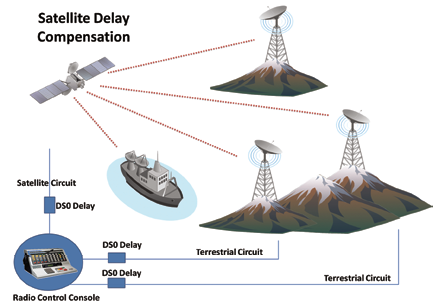
Figure 8. Satellite Delay Compensation.
Satellite Delay, Error, Jitter Simulation
The simulation of most commonly occurring conditions over satellite links such as; delay, bit errors, packet loss, and jitter, are essential to assess the behavior of voice, data, and video applications. Many Ethernet/IP Testers, WAN Link Emulators available from many test equipment manufacturers permit such simulation in the comfort of the lab. This equipment permits adding delays, errors, and other impairments over 10/100/1000 Mbps Ethernet. They also allow the user to accurately emulate bandwidth, latency, loss and congestion. Additional options allow real-time traffic graphs and network statistics. GL offers a host of such solutions for such simulation and testing, with information available at http://www.gl.com/telecom-test-solutions/network-impairments-simulation.html
Similarly, test equipment that permits delay and error simulation over TDM can assess voice, data, and video applications over TDM based networks. GL provides such tools across all interfaces and technologies, including IP, SONET SDH, ATM, and Analog, shown below and at
http://www.gl.com/errorinsertion.html.
Voice + Data Quality Testing Of Narrowband Satellite Channels
With the increasing demand for Internet traffic, digital TV and other digital services, it becomes necessary to evaluate end-to-end voice and data quality with appropriate test tools. The test tool must be capable of interfacing to different satellite end-user devices with ease. The test tools must allow users to send and receive the simulated voice and data traffic (as seen in real-time) over satellite network using these test tools and performing the QoS measurements. Requirements of such test tools include:
• Allowing network independent tests
• Support for different codec types—low bit transmission over IP
• Support for all satellite devices
• Delay and echo measurements
• Automated, and centralized control of test points distributed over different locations
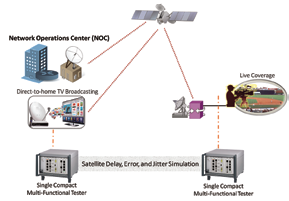
Figure 9. Satellite Delay, Error + Jitter Simulation.
When the network technology becomes important, one can also simulate the real-time voice and data traffic over various networks using network-specific protocol simulators end to end. Use of ITU standard voice quality algorithms PESQ and POLQA is essential. A versatile test suite by GL provides these capabilities within a portable single-box solution with the flexibility of connecting to, and between, any network, any service, and any interface: http://www.gl.com/eMedia/network-wide-voice-and-data-quality-monitoring.html.
DCME (Digital Circuit Multiplication Equipment)
Satellite capacity is somewhat more expensive than terrestrial capacity. DCME technology, basically a voice compression technique, is widely used in satellite based telecommunication networks,integrating DSI (Digital Speech Interpolation), VBR (Variable Bit Rate), LRE (Low Rate Encoding) and any other effective compression transmission technologies to multiply the traffic capacity of digital E1 circuits.
DCME-6 is connected to both sides of the 2 Mbps bearer transmission link, enlarging the conventional 2Mbps link circuit capacity by 4 to 6 times by means of the complicated signal compression coding and channel dynamic distribution without changing the existing load group coding speed and shape, G.703 inlet and G.704 transmission control protocol on TS0. This technology is widely used in the satellite IDR (Intermediate Data Rate) equipments, single-determination TDMA satellite link circuits, digital microwave and digital UHF link circuits, digital cable and optical fiber stress routers, and many combined long-distance or short-distance digital link circuits.
DCME-6 is applicable for telephone, voice-band data, signaling message and some transparent data link circuit (please see Figure 11 below.)
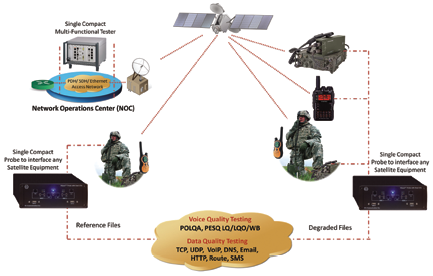
Figure 10. Voice + Data Quality Measurement Over Satellite Networks.
Test + Verification Of DCME Links
The DCME testing, analysis and verification can be performed with DCME monitoring software such as GL’s DCME analysis software— http://www.gl.com/dcme.html.
The DCME analysis software with appropriate hardware interfacing capability may connect non-intrusively to the bearer side of DCME equipment to perform real-time and post-processing of the bearer signal. In real-time mode, the status of the bearer including synchronization, bearer loading, fax loading and other statistics should be monitored.
In post processing mode, the entire DCME bearer signal should be captured using the available special recording applications for E1 trunks. The captured file is then analyzed with the DCME analysis software.
In the DCME analysis software, the software aligns to the DCME frame, and the DCME control channel(s) are decoded. The data is displayed to permit bit level analysis and verification of channel mapping and implementation timing of the DCME protocol. DCMEs use variable bit rate (VBR) encoding to create overload channels to handle overload conditions. Bearer channels are randomly selected for rate reduction. The software identifies the bit mode of each overload and normal channel (4, 3 or 2 bits).
Additionally, a Facsimile subframe analysis software may be used that permits bit level analysis and verification of fax data sub-multiplexing on the DCME output bearer signal. The DCME analysis software calculates the mapping and interleaving algorithms, FEAC and permits time of implementation verification
Satellite WAN Links
Generally, the WAN networks are implemented using various terrestrial technologies like T1, E1, T3, E3, SONET/SDH, ATM, xDSL, Frame Relay, and IP/MPLS. Each of these technologies have their own bandwidth, delay and loss characteristics.
Sometimes, there may be a need to use wireless/satellite networks for WAN as a secondary link to handle the outages of the terrestrial primary links due to natural or man-made disasters. The satellite links introduce delays in excess of 500 milliseconds and bit error rates as high as 1x10-6, causing havoc for protocols and applications. There arises a special need to test services at such conditions, and to determine the most cost-efficient WAN technology to meet the required performance.
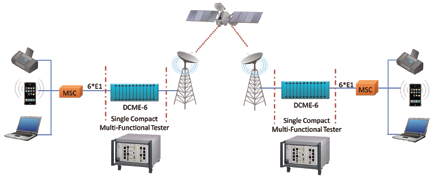
Figure 11. DCME Applications + Testing Over Satellite Networks.
The most obvious source of performance degradation is bandwidth bottlenecks, but this is certainly not the only cause. Latency, jitter, packet loss, congestion, and other impairments can all wreak havoc on throughput and responsiveness, and simply increasing WAN bandwidth may do little to improve performance.
Application performance over WAN networks can be highly sensitive to bandwidth, latency, jitter, loss, and other WAN impairments. Testing these applications on the local network generally fails to identify critical issues that impact the end-user experience. Fortunately, a new generation of WAN network emulation appliances makes it simple and affordable to test applications in the lab under real-world conditions, ensuring smooth roll-outs of new applications and helping to optimize the performance of the applications for the end-users.
A WAN Emulator must be capable of emulating the bandwidth, delay, jitter, packet loss, bit error rate, and background traffic characteristics of WAN network, all at once. Only a simultaneous emulation of all these impairments will help in testing under real world conditions. (See Figure 12 below.)
Here are some of the conditions that one can evaluate using a good WAN emulation tool...
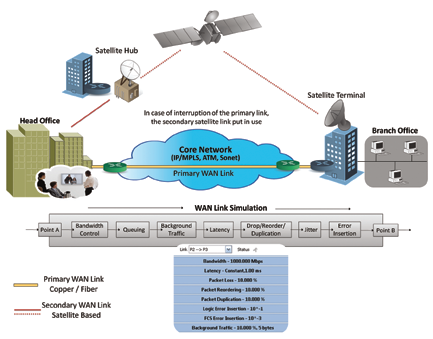
Figure 12. Satellite WAN Links Applications + Testing.
How much bandwidth is needed?
Modern IP networks carry traffic that are bandwidth-intensive. There is a need to pre-determine how much bandwidth is needed to keep the applications running smoothly. For example, a huge video file with 3D, good quality audio, and 1080p resolution requires 10to 20 Mbps bandwidth speed to run as smoothly as a live TV and allow sharing the bandwidth with other users for other activities. A WAN Emulator should be able to emulate the Bandwidth throttling characteristic of real WAN networks. Additionally, it should allow the emulation of Background traffic competing with the test traffic for the limited WAN bandwidth.
How efficient is downloading and uploading files on the network?
Minimizing the time required to complete the transfer of large files, without being corrupted is the need of the hour. Large institutions such as banks rely on overnight data backup to a centralized facility. The real-time conditions to be tested here are bandwidth limitations, and latency. WAN Emulator must be capable of modeling traffic from a full enterprise network of regional, branch, and local offices, all connected to a centralized datacenter. It should allow network administrators to...
—View applications as they will be seen by different end-users
—Verify the operation of application servers with concurrent users
—Emulate the bandwidth, and the latency (delay) characteristics of the WAN network
How do applications like VoIP, Video conferencing perform?
Modern IP networks are increasingly used to carry out voice and video traffic for applications like voice and video conferencing. Such traffic is sensitive not only to the bandwidth bottlenecks, but are highly sensitive to the latency, jitter and packet loss introduced by the WAN network.
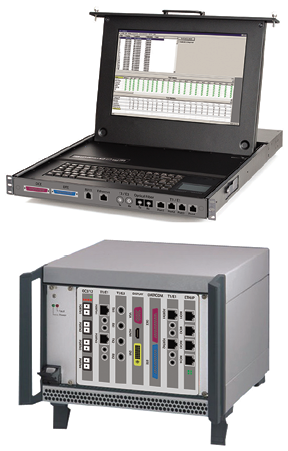
Figure 13. All-In-One Test Platform.
How well do the enterprise applications all running together work?
Critical enterprise-level applications that run over the IP cloud such as e-commerce applications, banking applications, and voice/video conferencing, need to be tested for negligible packet loss, responsiveness, scalability, and so on.
Conclusion
The deployment of a cost effective SATCOM network requires comprehensive testing tools packaged with the capability of multi-interface, and multi-functionality. Many test equipment manufacturers already offer variety of testing tools to meet the requirements discussed in this article. One such test system that has captured interests of many telecommunication carriers and service providers is a fully configured compact test system from GL Communication Inc. This system contains all (or any) of the interfaces mentioned in this article plugged-in to a single chassis, helping to cut on the overall infrastructure costs.
A snapshot of this all-in-one platform accommodating 6 test modules is show above in Figure 13. Each module can be controlled independently with user-configurable rates to accommodate required test features.
• Ethernet / IP (10/100/1000 Mbps) Interfaces
• DataCom Serial Interfaces (RS-232, V.35, RS-422/449)
• Channelized and unchannelized T3 E3 and
• OC-3 STM-1 Interface
• Channelized and unchannelized T1 E1 Interfaces
• Unchannelized OC-12 / STM-4 Interfaces
• Analog - RJ-11 2-Wire, FXO FXS, 4-Wire, PTT Interfaces
GL Communications Inc is a leading Test and Measurement manufacturer that caters to worldwide telecommunications industry with a comprehensive suite of telecom testing solutions, telecomm lab solutions, and consulting services for a variety of telecom networks including Wireless, IP, TDM, and Fiber Optic lines.”
Visit http://gl.com/ for further company and product information.

